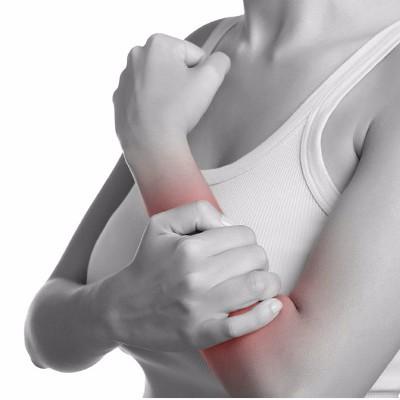What does upper limb fracture have?
summary
Fracture is the complete or partial fracture of the continuity of the bone structure. More common in children and the elderly, young people also occur from time to time. The patients often had one site fracture, and a few were multiple fractures. After timely and proper treatment, most patients can recover their original functions, and a few patients may have different degrees of sequelae. Let's share what upper limb fractures have?
What does upper limb fracture have?
The first is clavicular fracture. Clavicular fracture can be divided into three types according to location: 1. Middle 1 / 3 clavicle fracture 2. Outer 1 / 3 clavicle fracture 3. Inner 1 / 3 clavicle fracture

According to the injury mechanism, it can be divided into extension type and flexion type. The extension type is more common. According to the lateral force, the extension type can be divided into ulnar deviation (adduction type) and radial deviation (abduction type). 2. Classification according to the degree of fracture displacement (Gartland classification) in 1959, Gartland divided the straight fracture into three types: type I: no displacement of fracture; type II: the distal fracture segment was tilted backward, or had lateral displacement at the same time, and the posterior cortical bone was still intact; type III: the fracture end was completely displaced, and the cortical bone had no contact; type III A: the distal fracture segment was tilted backward, and the posterior cortical bone was intact; type III B: the fracture was laterally displaced, The fault ends are still in contact with each other

According to its pathological changes, it can be divided into four types (Beijing Jishuitan Hospital, classification of bone and joint injury). Type I: no displacement, the fracture is cracked and strong, the two fracture ends are in contact, the local extensor fascia and periosteum are not torn. Type II: lateral displacement, the fracture block moves to the side, front or rear, the gap between the fracture ends increases, and the extensor fascia and periosteum are slightly displaced Partial periosteum tear, severe displacement can be completely torn, fracture block is unstable after reduction, in fixation can occur again. Type III: rotation displacement type: the fracture piece was displaced to the side, front or rear, with rotation displacement. Due to the complete tear of local extensor fascia and periosteum, and the traction of forearm extensor, the fracture block can rotate outward 90 o-180 o along the longitudinal axis, and rotate forward or backward in different degrees along the transverse axis, with no change in the humeral ulnar joint. Type IV: fracture dislocation type: the fracture block can be displaced laterally and rotationally, and the elbow joint can be dislocated radially, ulnar and posteriorly. Joint capsule and collateral ligament tear, elbow soft tissue injury is serious.

matters needing attention
During this period, one is to pay attention to increase the bed rest time, do not have strenuous exercise, to prevent re injury, the other is to pay attention to the reasonable adjustment of diet, increase the intake of high protein foods such as eggs and lean meat, and pay attention to calcium supplement, oral calcium containing vitamin D


















